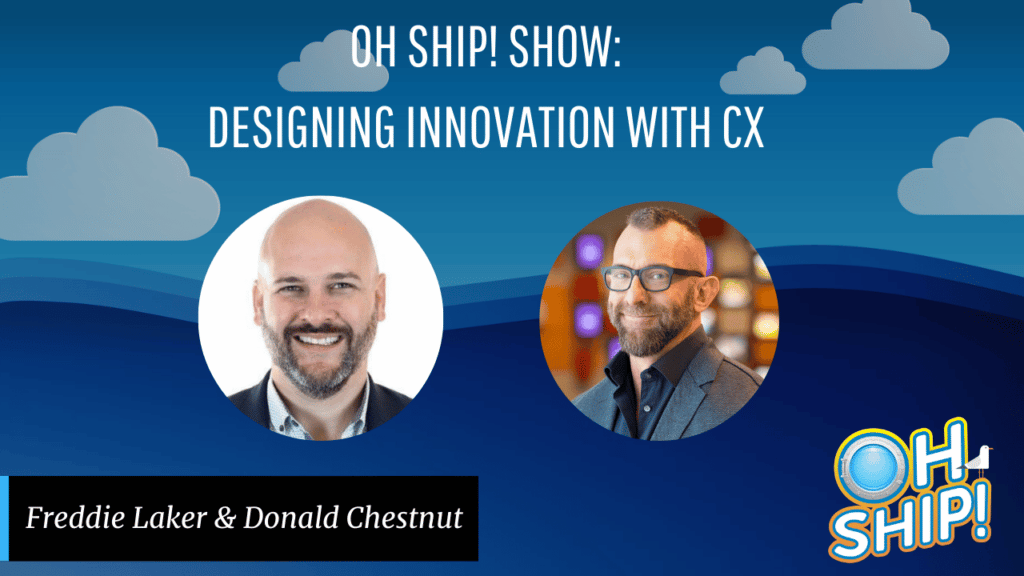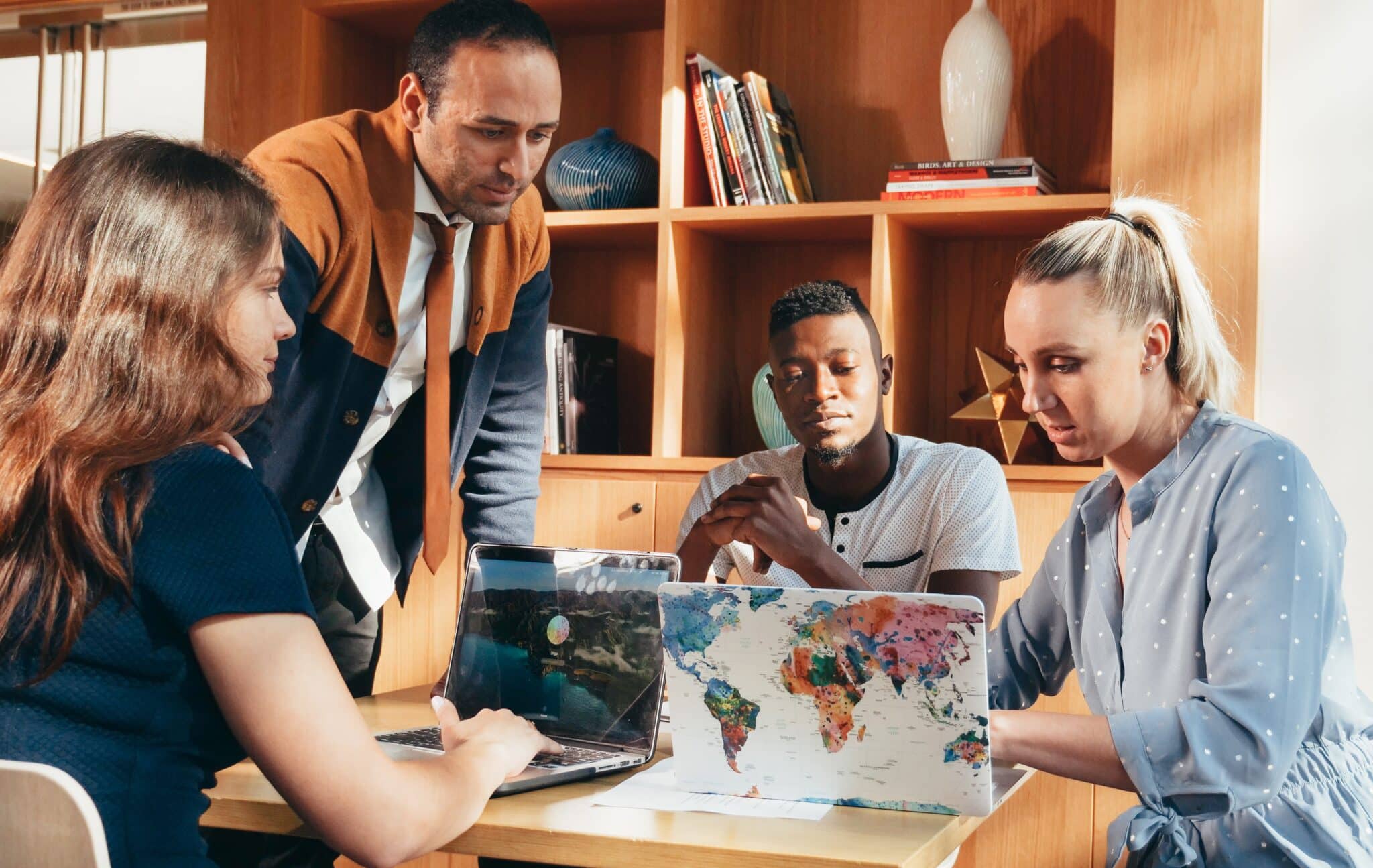Learn about centering experience in design from this seasoned expert!
Donald Chestnut, chief experience officer at General Motors, has a lot to say about future innovation, design, and customer experience. In his daily work, he zeros in on how businesses can approach them each through the eyes of the customer. With a rich career in customer experience, Donald shares powerful advice with us that businesses of all sizes can leverage.
Moving from technology to experience
In the late ’90s, during Donald’s early days in digital and new media, the concept of “human computer interaction” (HCI) became rebranded as user experience.
“It was these early days of technology; the explosion of microcomputers, that made us start talking about user experience,” he says. As a project manager for American Express, he started focusing not just on the technology but on how people engage with the technology—his real passion.
Donald doesn’t view himself as a designer, but he’s always been interested in how people engage and how to make engagement super easy.
He remembers a mentor saying, “The experience is the brand,” which resonated with him.
“It was first brand experience, and then user experience, and then, as the industry continued to grow and technology transformed and disrupted all sorts of industries, customer experience came to the forefront,” he says. “Suddenly it wasn’t just about one channel; it was how you’re thinking about the business from the outside in.”
Why he loves customer experience
“I love technology. That’s what’s changing the world,” Donald says. “You can’t be in business without understanding the role that technology is playing.”
“What is new and innovative today quickly—if it’s that innovative—becomes standard in one industry and adopted to another industry, and then there’s an opportunity for what do you do next,” he says.
“Always look for opportunities to do things better,” he says, noting that behavior patterns change over time. Learn from watching your customers. For instance, while digital retail has made enormous strides over the last 20 years, customers continue to go to physical retail stores. “It’s not one or the other; it’s the blend,” he says. “It’s the constant change of customer behavior and people behavior that is the most exciting.”
What makes him geek out about experience, while others are geeking out about the tech itself? Freddie asks.
To Donald, tech is exciting for its ability to catalyze behavioral change. “That’s my definition of innovation,” he says. “Technology has capability, but once you use technology to change how someone books a cruise, or buys a car, or whatever else it might be—or keeps in touch with their family—then you’ve innovated. And that ain’t never goin’ back.”
The future of face wearables
Google Glass obviously didn’t change people’s behavior, Donald points out, saying it was perhaps a great product well before its time. But we’ll be seeing a great new chapter in wearables, he asserts.
On the five-year horizon, how real does he think it will be?
“Oh, I think it will be real,” he says, pointing out that people are already embracing wearables like Apple watches and FitBits.
“Now, once you put something on your face, it’s a whole different class of wearable,” he adds. Innovators need to understand that instead of viewing wearables as fashion. He envisions having the option to put digitally enabled capabilities into any given eyeglass frame.
“What I also love about the notion of face wearables and glasses is the mixed reality,” he says. “There’s something to be said for full virtual—goin’ full metaverse—something pretty amazing about being able to experience today’s world and have a digital overlay at the same time.” He thinks of how that could affect shopping, training and education, and repairing appliances or even a jet engine by providing a different level of information right in front of your face.
Any technology used while driving must be tightly vetted, he notes, pointing out how GM’s technology can reflect safety information like speed onto the windshield. Many partners pitch ideas they could do, but he focuses on what they should do.
Technologies he is watching
Donald is closely watching data on driving patterns, which can have several key functions:
- Better serving the driver
- Conveying information to insurance companies
- Enabling cities to detect road problems that need fixing.
Cars can now predict where potholes will emerge based on slight bumps, allowing them to fix such problems at a tenth of the cost.
Such data usage doesn’t need to infringe on privacy. “We can look at the data in aggregate; we can look at the data specific to you with your permission,” Donald affirms.
Plus, vehicles can “talk” to each other, he continues. They can convey areas of traffic congestion, for instance. “When you think about autonomous vehicles, that becomes all the more important—the vehicle share of data, of what is coming—what is coming literally and figuratively around the bend.”
With Supercruise, which offers a new level of driver-assisted features, people need to stay fully alert while driving. But level 5, fully autonomous driving, is a game-changer.
We’ll continue seeing step change with these technologies, just as with the iPhone, he notes—not one new innovation that massively changes everything. Hardware, sensors, and the data constantly circulating in and out of the vehicle will enable autonomous driving and improved performance. And GM has pioneered the connected car with OnStar; if a driver gets into an accident, contact center staff connect with them to help.
“It will be a fundamentally different relationship that consumers have with mobility in two years, five years, and ten years than it is today—and than it certainly was ten years ago,” says Donald. “That is super exciting—just the amount of innovation that is happening in the world of mobility.”
Where smaller businesses should focus
“Businesses of any size should be thinking about the experiences that they’re providing,” says Donald.
In following Bezos’ advice, remember that even happy customers will jump ship if they find a better product that meets an unmet need they didn’t even realize they had. “The best customer experiences anticipate your needs before you have them,” Freddie asserts.
“I always define customer experience as two things,” Donald asserts. “It’s breaking down how much do you know about your customers … what are their pain points, and what are their pain points tomorrow? And what you do with that insight in the design of your service … that’s how a customer experience comes to life.”
The role of qualitative and quantitative data—and intuition
“Intuition, competitive best practice, what one industry is doing that you might want to take over, qualitative vs. quantitative—all of them have a place,” Donald says.
“Mixing them all is so important,” he asserts. “From an experience standpoint, really understanding behavior is so important.”
Qualitative data provides pivotal insights on experience. “That gives you the why behind the what. Quantitative gives us the ‘what’s happening.’” And a quantitative standpoint conveys its scale.
GM’s innovative Voice of the Customer program mines data from customer interactions (43 million and counting), from call center logs to emails, to detect areas for improvement.
Over the last 5 to 7 years, Donald’s appreciation for quantitative insights has deepened. Pair it with a bit of gut instinct and then qualitative insights to understand, for instance, the pain points of a fleet manager supervising nine drivers, he advises. “Data alone—quantitative—doesn’t show you that, but it is very key to great customer experience. I can’t say enough about qualitative, but that’s not the only part of the story in large businesses that scale; you need to be able to take that and then prove it out.”
Navigating Oh Ship! moments
Twenty years ago, Donald worked on a travel website in Europe backed by substantial investment. They were focused on travel-related content—which proved far more time-consuming than providing booking tools and ultimately didn’t pay off. “At the end of the day, booking is more important; that’s where the revenue comes from,” he says. “At the end of the day, they’re competing against booking engines.”
His takeaways: In the early stages of a product or business, consider the total cost of ownership and if you’re ready to maintain that level of commitment, he says. However innovative you are, never lose sight of where the revenue’s coming from. People aren’t seeking out an innovative new way to shop, for instance. (Freddie notes that innovative design layouts on ecommerce sites can crush conversion rates.)
Advice for people embarking on a similar career path
First, embrace technology, as it’s intertwined with customer experience. Work to understand the future of AI, connected cameras, and other tech. Be hungry to know what the customer wants and needs.
He urges entrepreneurs to stay “always relentlessly focused in smart ways around how to understand a user need even when it’s not articulated.” That’s how some of the best startups launch. Paying attention to how behavioral change happens—which changes.
And don’t downplay the customer’s ability to adapt. Donald shares how quickly people habituate to self-driving taxis GM Cruise has on the road now in San Francisco. He quotes a passenger: “The first time you get in a self-driving car, it is a fundamentally game-changing experience for the first five minutes. And then your phone comes out,” he says. We habituate astoundingly quickly.
Additionally, measure experience just as you would anything else. “The real challenge . . . is making sure the rest of the people—your leaders, your technologists—are all thinking experience and putting that in their OKRs and other things, not just leaving it to three people,” Donald emphasizes. “That responsibility is far bigger, so it needs to be shared across the organization.”
Finally, work to enhance the employee experience, he urges. He sits on an employee experience steering team, sharing best practices that relate to both domains, as the lines are growing increasingly blurred. “You want to have happy customers, you have to have happy employees,” he says. “If you’re trying to compete in a world that is changed by technology, you need to create an environment that gives people opportunities, recognizes them for who they really are, their full self.”
Find Donald on LinkedIn. And like and follow us for more great content!








